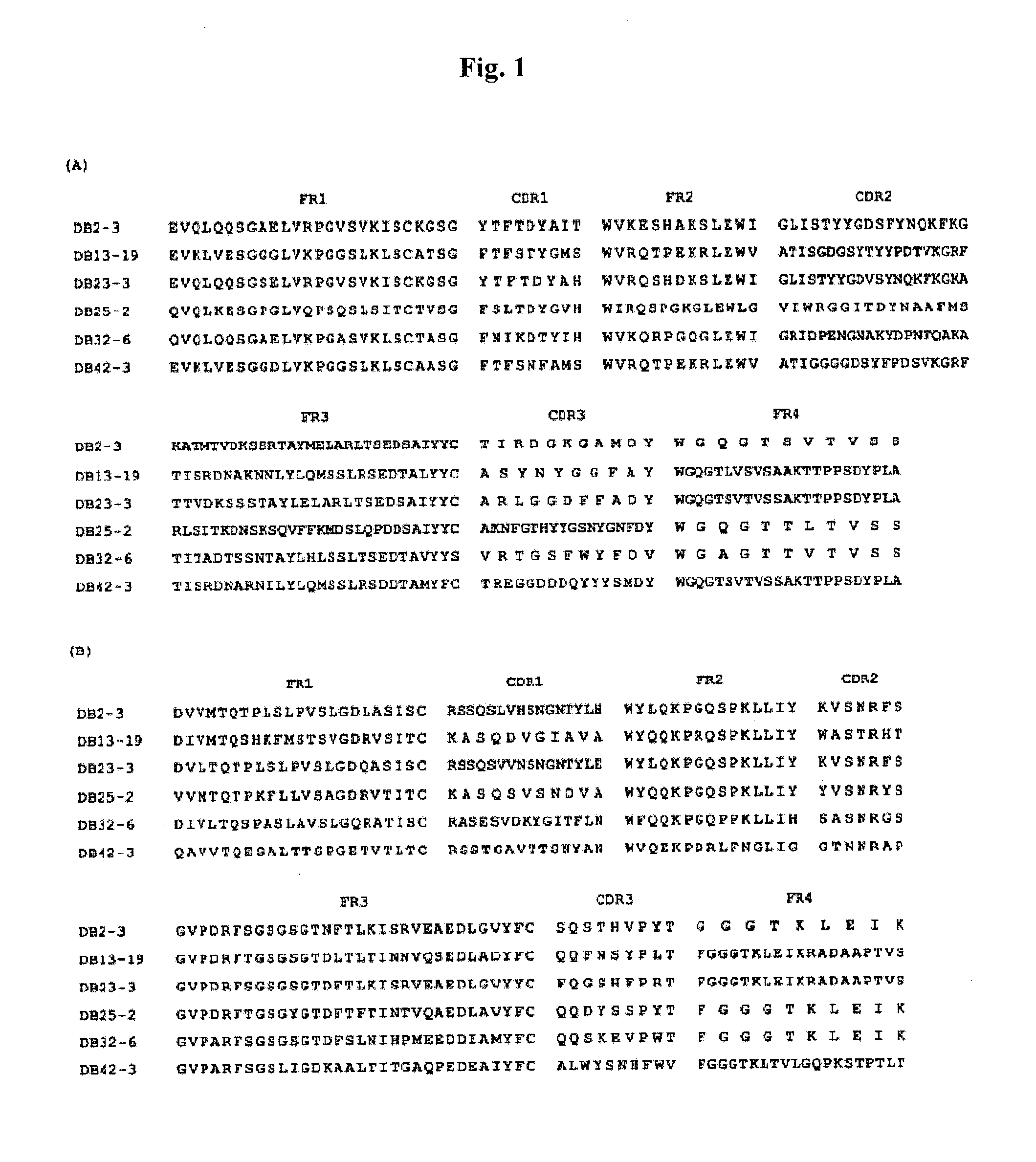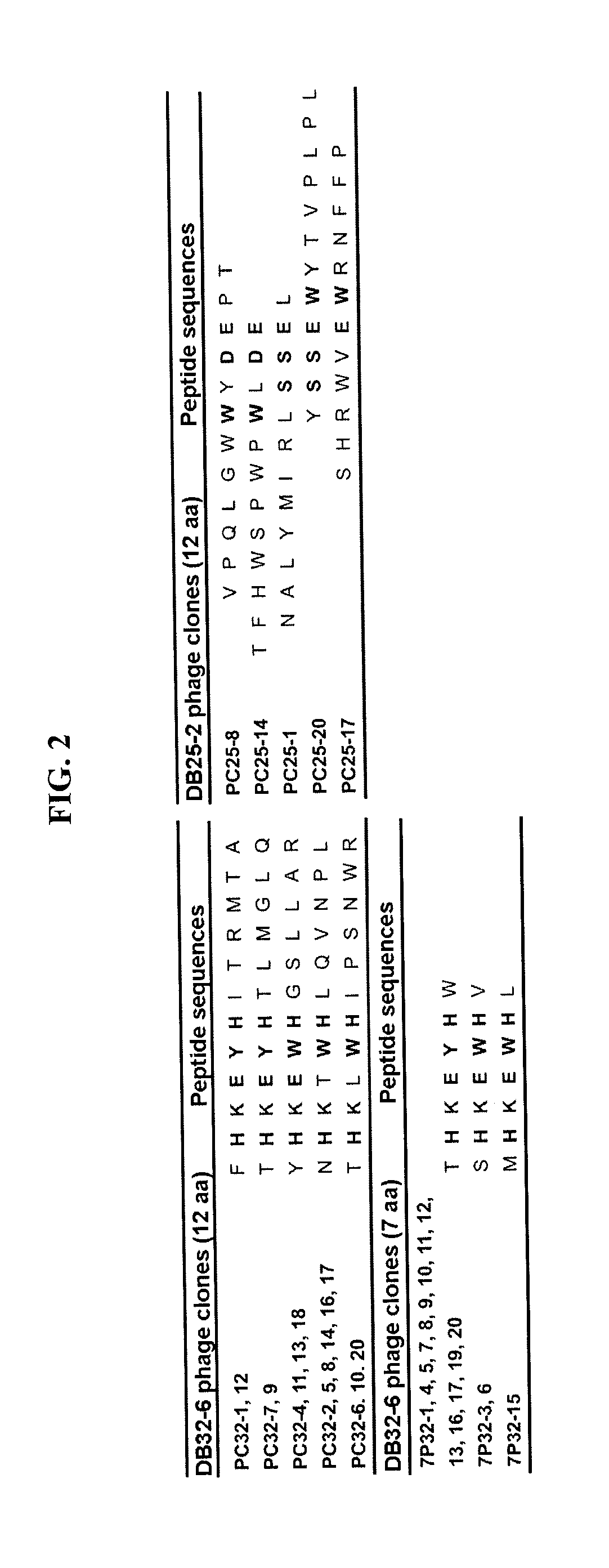Anti-Dengue Virus Antibodies
a technology of dengue virus and antibodies, applied in the field of antidengue virus antibodies, can solve the problems of life-threatening dhf/dengue shock syndrome (dss)
- Summary
- Abstract
- Description
- Claims
- Application Information
AI Technical Summary
Benefits of technology
Problems solved by technology
Method used
Image
Examples
Embodiment Construction
[0014]Described herein are isolated anti-dengue virus antibodies, including the monoclonal antibodies listed in Table 1 below, i.e., DB2-3, DB3-4, DB5-2, DB6-1, DB7-3, DB8-1, DB9-1, DB11-3, DB12-3, DB13-19, DB16-1, DB19-4, DB20-6, DB21-6, DB22-4, DB23-3, DB24-2, DB25-2, DB27-3, DB28-4, DB29-1, DB31-4, DB32-6, DB33-3, DB34-1, DB36-2, DB37-1, DB38-1, DB39-2, DB40-2, DB41-2, and DB42-3, as well as their antigen-binging fragments and genetically engineered functional variants.
[0015]The term “isolated antibody” used herein refers to an antibody substantially free from naturally associated molecules, i.e., the naturally associated molecules constituting at most 20% by dry weight of a preparation containing the antibody. Purity can be measured by any appropriate method, e.g., column chromatography, polyacrylamide gel electrophoresis, and HPLC.
[0016]Any of the monoclonal antibodies listed in Table 1 can be prepared by conventional methods, e.g., hybridoma technology, recombinant technology,...
PUM
| Property | Measurement | Unit |
|---|---|---|
| temperature | aaaaa | aaaaa |
| pH | aaaaa | aaaaa |
| concentration | aaaaa | aaaaa |
Abstract
Description
Claims
Application Information
 Login to View More
Login to View More - R&D
- Intellectual Property
- Life Sciences
- Materials
- Tech Scout
- Unparalleled Data Quality
- Higher Quality Content
- 60% Fewer Hallucinations
Browse by: Latest US Patents, China's latest patents, Technical Efficacy Thesaurus, Application Domain, Technology Topic, Popular Technical Reports.
© 2025 PatSnap. All rights reserved.Legal|Privacy policy|Modern Slavery Act Transparency Statement|Sitemap|About US| Contact US: help@patsnap.com


